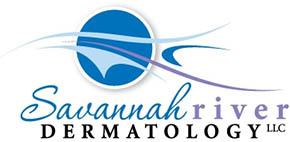Every year, doctors diagnose millions of patients with skin cancer. Two of the most common types of skin cancer we treat are: Squamous Cell Carcinoma and Basal Cell Carcinoma.
Basal Cell Carcinoma
It’s actually the most common type of cancer in America, so if you’ve been diagnosed with a BCC, you’re not alone.
Signs and Symptoms
Most basal cell carcinoma’s grow slowly. They often appear as a shiny, raised, round growth on the head or neck, but can be mistaken for a pimple, scar, or sore. If you notice any of the following symptoms, please consult your dermatologist:
- A pink or reddish growth that dips in the center
- A scaly and dry spot
- A sore that doesn’t heal (or heals and returns) and may bleed, ooze, or crust over
- A scar-like mark on your skin that may be white, yellow, or skin-colored and waxy or shiny
Is it serious?
People with all types of skin develop BCCs, however those who have spent many years exposing their skin to the sun without proper protection or using tanning beds are at a higher risk.
For most people, BCCs are not life-threatening. When found early, this skin cancer is highly treatable. We recommend performing a self-exam at least once a year to check your skin for signs of changes.
While this skin cancer tends to grow slowly, without treatment, it can grow deep. If this happens without intervention, it can injure nerves, blood vessels, and anything else in its path. It can also spread to other parts of the body, which can be deadly (AAD). We want you to live a long, healthy life with beautiful skin, so to us your BCC is very serious and we want to make sure you get the best care possible to treat it.
Squamous Cell Carcinoma
Squamous Cell Carcinoma is another common type of cancer we treat. It usually comes from excess exposure to ultraviolet light from the sun or tanning beds that causes damage to the skin. The body will try to repair this damage, but when it no longer can repair all the damage, cancer cells develop as mutations in the skin’s cells.
Signs and Symptoms
- A rough, reddish scaly area
- An open sore (often with a raised border)
- A brown spot that looks like an age spot
- A firm, dome-shaped growth
- A wart-like growth
- A tiny, rhinoceros-shaped horn growing from your skin
- Sore developing in an old scar
Does it hurt?
Many times, early skin cancer has no symptoms. Some people notice only a change to their skin, such as a sore that won’t heal or heals and returns.
Dr. Paine and Mohs Surgery
Here at Savannah River Dermatology, we treat BCCs regularly. Dr. Paine treats skin cancers including BCCs through Mohs surgery. Mohs micrographic surgery is the most effective and advanced treatment for skin cancer. It is performed on an outpatient basis using a highly specialized and precise technique that removes the cancer in stages, one tissue layer at a time. This technique allows physicians to precisely identify and remove a tumor while leaving the surrounding healthy tissue intact and unharmed. Mohs surgery offers the highest potential for cure – even if the skin cancer has been previously treated by another method. Learn more about Dr. Paine and Mohs at Savannah River Dermatology and see examples of her surgical results here.
The information presented in this blog is for informational purposes only and should not be taken as medical advice. If you have questions or concerns, please call our office or make an appointment with a medical professional. Savannah River Dermatology is located at 575 Furys Ferry Rd in Augusta, Ga. Our office can be reached at 706-691-7079.








